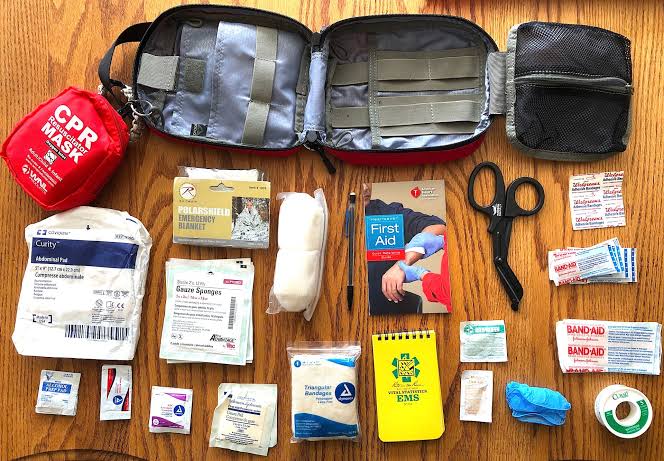Are you familiar with the term “sweat collection”? Sweat collection is a medical procedure that involves the collection and analysis of sweat for diagnostic and research purposes. It has gained significant attention in recent years due to its potential in detecting various diseases and monitoring the health of individuals. In this article, we will explore the concept of sweat collection, its importance in medical applications, and the advancements in sweat collection kits.
Introduction to Sweat Collection
Sweat is a clear fluid produced by the sweat glands in our skin. Traditionally, sweat was considered to be mainly involved in temperature regulation. However, recent studies have revealed that sweat contains a wealth of valuable information about our health. Sweat collection involves the non-invasive sampling of sweat from the skin’s surface for further analysis.
The Significance of Sweat Analysis
Analyzing sweat can provide valuable insights into an individual’s health status, as it contains various biomarkers such as electrolytes, metabolites, proteins, and hormones. By analyzing these biomarkers, healthcare professionals and researchers can monitor a person’s health, diagnose diseases, track treatment progress, and personalize medical interventions.
Sweat Collection Process
Sweat can be collected using different methods, including sweat patches, microfluidic devices, and wearable sensors. Sweat patches are adhesive patches placed on the skin to collect sweat over a specific period. Microfluidic devices use tiny channels and sensors to collect and analyze sweat in real time. Wearable sensors, such as smartwatches or bands, can continuously monitor sweat production and collect samples for analysis.
Advancements in Sweat Collection Kits
Over the years, significant advancements have been made in sweat collection kits, making them more user-friendly and efficient. Modern sweat collection kits are designed to be non-invasive, comfortable, and easy to use. They often include innovative features like microchannels for precise sample collection and integrated sensors for on-site analysis. These advancements have greatly improved the accuracy and reliability of sweat analysis.
Applications of Sweat Collection
Sweat collection has a wide range of applications in various fields, including sports science, disease diagnosis, drug monitoring, cystic fibrosis diagnosis, analyzing hormone levels, genetic testing, and research studies. Let’s explore some of these applications in detail.
Sweat Collection in Sports Science
In sports science, sweat collection plays a crucial role in monitoring an athlete’s performance and optimizing training strategies. By analyzing sweat composition, researchers can assess electrolyte balance, hydration levels, and metabolic markers, helping athletes prevent dehydration, fatigue, and electrolyte imbalances.
Sweat Collection for Disease Diagnosis
Sweat analysis has the potential to revolutionize disease diagnosis. By examining sweat biomarkers, medical professionals can detect early signs of various conditions, such as diabetes, cystic fibrosis, and certain types of cancer. Sweat collection provides a non-invasive and convenient method for diagnosing these diseases, eliminating the need for invasive procedures.
Sweat Collection for Drug Monitoring
Monitoring drug levels in the body is essential for personalized medicine and optimizing treatment regimens. Sweat collection offers a non-invasive alternative to blood sampling for drug monitoring. By analyzing drug metabolites present in sweat, healthcare professionals can assess drug efficacy, adjust dosage, and ensure patient compliance.
Sweat Collection for Cystic Fibrosis Diagnosis
Cystic fibrosis is a genetic disorder that affects the respiratory and digestive systems. Sweat collection is particularly valuable in diagnosing cystic fibrosis. Individuals with cystic fibrosis have higher levels of chloride in their sweat. By measuring chloride concentration in sweat samples, doctors can confirm the presence of cystic fibrosis and initiate appropriate treatment.
Sweat Collection for Analyzing Hormone Levels
Hormone imbalances can have significant effects on our overall health. Sweat collection allows for the analysis of hormones, such as cortisol and testosterone, providing insights into hormonal disorders and their impact on the body. This information can guide treatment decisions and hormone replacement therapies.
Sweat Collection for Genetic Testing
Genetic testing plays a vital role in identifying inherited conditions and predispositions to certain diseases. Sweat collection provides a non-invasive method for obtaining genetic material, such as DNA, for analysis. This approach is particularly useful when working with infants, children, or individuals who may be averse to blood draws.
Sweat Collection for Research Studies
Sweat collection is extensively used in research studies to gather data on various health parameters. Researchers can analyze sweat biomarkers to study the effects of exercise, environmental factors, and lifestyle choices on health. This data helps in understanding disease mechanisms, developing new treatments, and promoting preventive healthcare practices.
Sweat Collection and Non-Invasive Monitoring
One of the key advantages of sweat collection is its non-invasive nature. Unlike blood or urine sampling, sweat collection is painless and comfortable. It allows for continuous or periodic monitoring of health parameters, enabling real-time data collection and analysis. This non-invasive approach promotes patient compliance and reduces the burden of traditional sampling methods.
Challenges and Future Directions
While sweat collection has shown great potential in medical applications, there are still challenges to overcome. Standardization of collection methods, calibration of analytical techniques, and establishing reference ranges for sweat biomarkers are areas that require further research. Additionally, the integration of sweat analysis into routine healthcare practices and the development of affordable sweat collection kits for widespread use are important considerations for the future.
Conclusion
Sweat collection has emerged as a valuable tool in medical diagnostics and research. By analyzing sweat biomarkers, healthcare professionals and researchers can gain valuable insights into an individual’s health status, detect diseases, monitor drug efficacy, and personalize treatments. With advancements in sweat collection kits and ongoing research, this non-invasive and convenient method of data collection holds immense potential for transforming healthcare practices.

